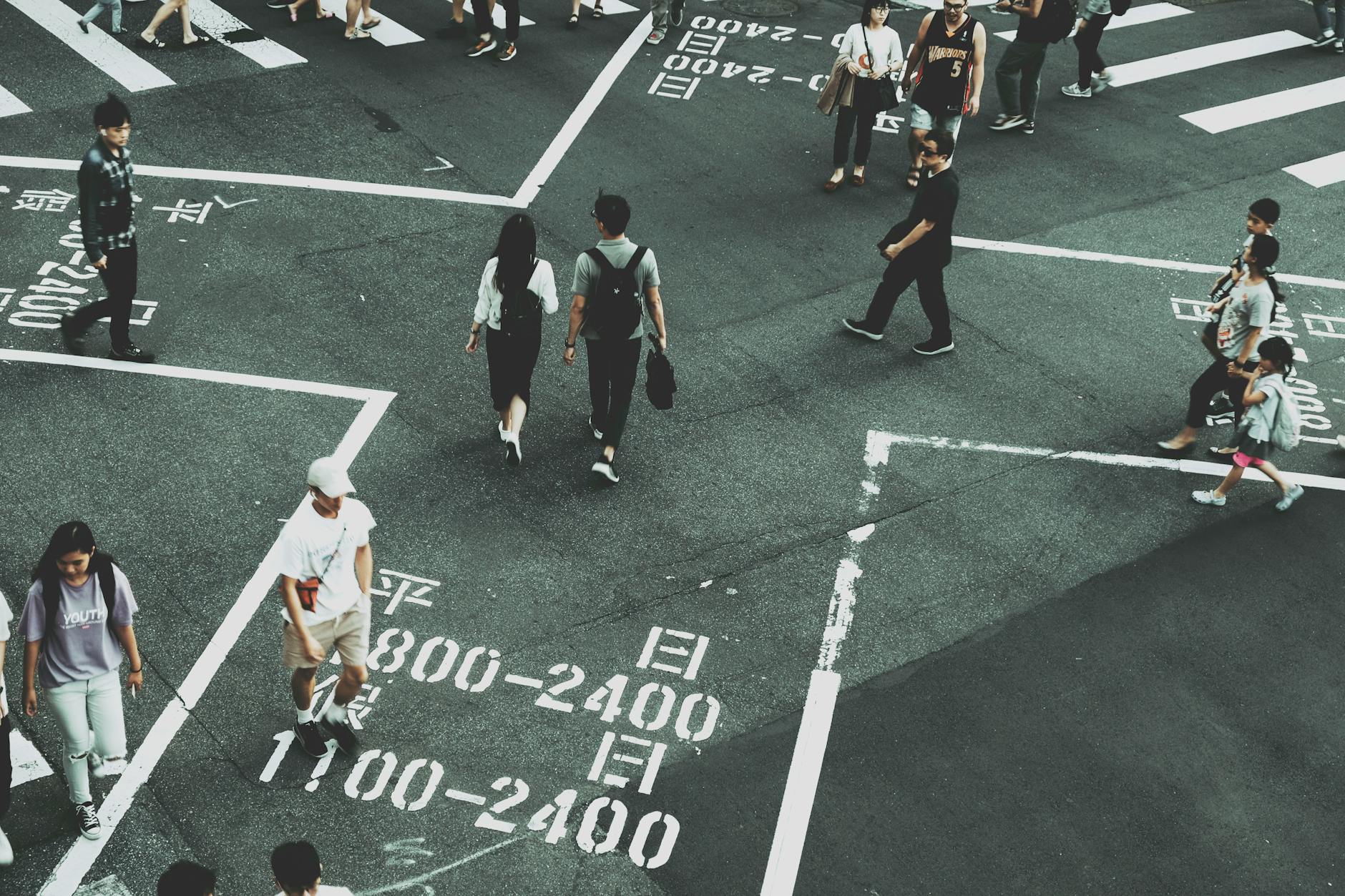
The Evolution of Street Photography: From Vintage Film to Modern Digital Techniques
As a street photographer, I've always been fascinated by the history and evolution of this dynamic genre. From its beginnings in the days of vintage film to the modern digital era, street photography has continuously adapted and transformed, offering new creative possibilities and challenges. In this blog post, I'll share my experiences and insights into the evolution of street photography, exploring the journey from vintage film to modern digital techniques and offering guidance for navigating this ever-changing landscape.
The Early Days of Street Photography: Film and the Birth of a Genre
The origins of street photography can be traced back to the late 19th and early 20th centuries, when the invention of portable cameras and faster film made it possible for photographers to capture candid, unposed images of everyday life on city streets.
Pioneers of Street Photography
The early pioneers of street photography, such as Eugène Atget, Henri Cartier-Bresson, and Walker Evans, laid the groundwork for the genre with their innovative approaches and dedication to documenting the world around them. They embraced the limitations of film, using them to their advantage to create images that were both aesthetically striking and deeply insightful.

The Magic of Film
Film played a crucial role in shaping the look and feel of early street photography. The unique characteristics of various film stocks, such as grain, contrast, and tonality, contributed to the distinctive visual style of the genre. Additionally, the process of developing and printing film added an element of craftsmanship and unpredictability that many street photographers found both challenging and rewarding.
The Transition to Digital: New Possibilities and Challenges
The advent of digital photography in the late 20th and early 21st centuries marked a significant turning point in the evolution of street photography. With the introduction of digital cameras and smartphones, street photographers gained access to new tools and techniques that expanded the creative possibilities of the genre.
The Digital Revolution
The digital revolution brought about numerous benefits for street photographers, including the ability to shoot in low-light conditions, the convenience of instant image review, and the flexibility to shoot in a variety of formats and aspect ratios. These advances enabled photographers to experiment and take risks in ways that were previously unimaginable with film.
The Smartphone Era
The ubiquity of smartphones has had a profound impact on street photography, making it more accessible than ever before. With high-quality cameras built into our everyday devices, anyone can capture a fleeting moment or a compelling scene on the street without the need for specialized equipment. This democratization of street photography has led to a proliferation of new voices and perspectives within the genre.
Modern Digital Techniques and the Evolution of Street Photography
As digital technology continues to advance, street photographers have embraced new techniques and approaches that push the boundaries of the genre. From high dynamic range (HDR) imaging to computational photography, these modern digital techniques have redefined the possibilities of street photography.
High Dynamic Range (HDR) Imaging
HDR imaging is a technique that involves capturing and combining multiple exposures of a scene to create a single image with an extended dynamic range. This allows street photographers to capture more detail in both the highlights and shadows, resulting in images with a greater tonal range and a more realistic representation of the scene.
Computational Photography
Computational photography is an emerging field that leverages advanced algorithms and image processing techniques to create images that were once impossible to achieve with traditional photography methods. Examples include focus stacking, panorama stitching, and artificial intelligence-based image enhancement. These cutting-edge techniques offer new creative possibilities for street photographers, allowing them to experiment with novel visual styles and push the limits of what is possible with a camera.
The Importance of Balancing Tradition and Innovation
As street photography continues to evolve and embrace new technologies, it's essential for photographers to strike a balance between tradition and innovation. By honoring the rich history of the genre while staying open to new possibilities, street photographers can create images that are both timeless and forward-thinking.
Learning from the Masters
Studying the work of the early pioneers and masters of street photography can provide valuable insights into the foundations of the genre, as well as inspiration for your own creative journey. By understanding the techniques, principles, and aesthetics that have shaped street photography over time, you can develop a deeper appreciation for the art form and incorporate these lessons into your own work.
Embracing Change and Experimentation
At the same time, it's crucial for street photographers to stay open to change and embrace the new opportunities offered by digital technology. This may involve experimenting with different cameras, lenses, or editing techniques, or exploring the potential of emerging technologies such as computational photography. By staying curious and adaptable, you can ensure that your street photography remains relevant and engaging in an ever-changing landscape.
Navigating the Future of Street Photography
As we look toward the future, it's clear that street photography will continue to evolve and transform as new technologies and social trends shape the way we interact with and document the world around us. As street photographers, our challenge is to navigate these changes while staying true to the core principles and values that define the genre.
The Impact of Social Media
Social media has become an integral part of our daily lives, and its influence on street photography is undeniable. Platforms like Instagram have provided a global stage for street photographers to share their work and connect with like-minded individuals. While this increased visibility can be beneficial, it's important to remember that the true essence of street photography lies in the stories we capture and the connections we make with our subjects and viewers, not just the number of likes or followers we accumulate.
The Role of Ethics and Responsibility
As street photographers, we have a responsibility to approach our work with respect, sensitivity, and an awareness of the ethical implications of our actions. This includes considering issues of privacy, consent, and representation, as well as being mindful of the impact our images may have on the people and communities we document. By upholding these values, we can ensure that street photography remains a vital and meaningful art form that enriches our understanding of the human experience.
To Recap
The evolution of street photography, from vintage film to modern digital techniques, is a testament to the enduring appeal and adaptability of the genre. As street photographers, we have the unique privilege of bearing witness to the world around us and sharing the stories that unfold on our city streets. By balancing tradition and innovation, embracing change, and navigating the challenges and opportunities of the future, we can continue to create images that resonate with viewers and celebrate the beauty, complexity, and diversity of life in the urban environment.
